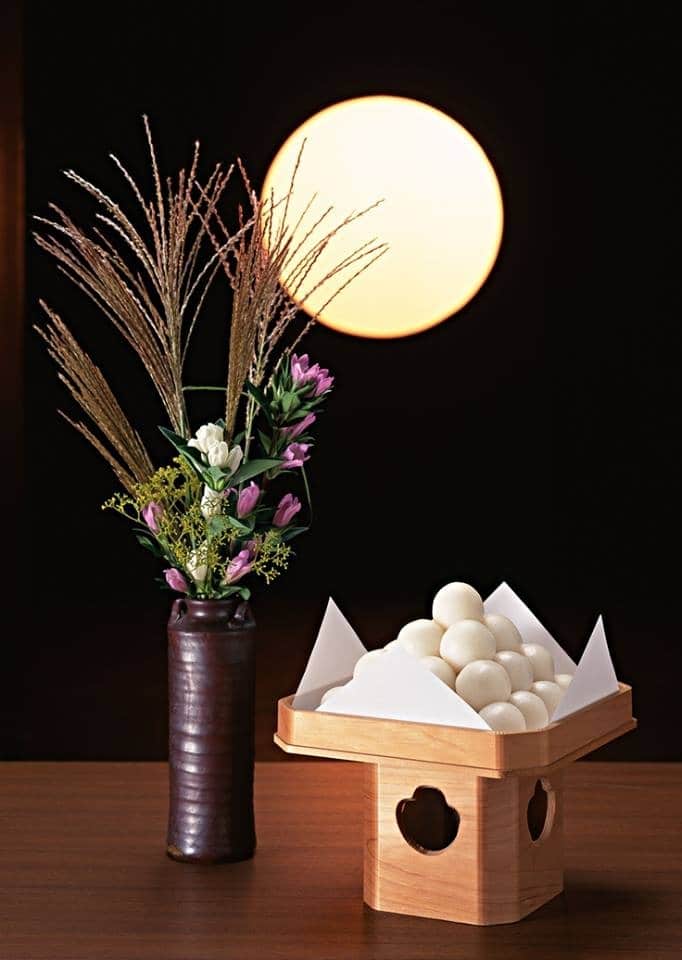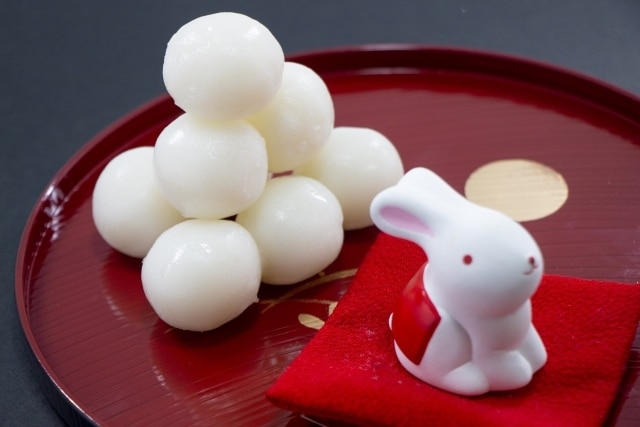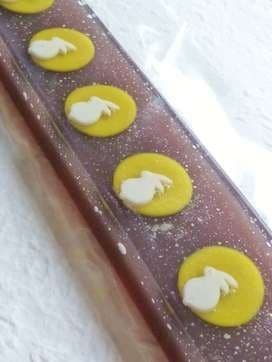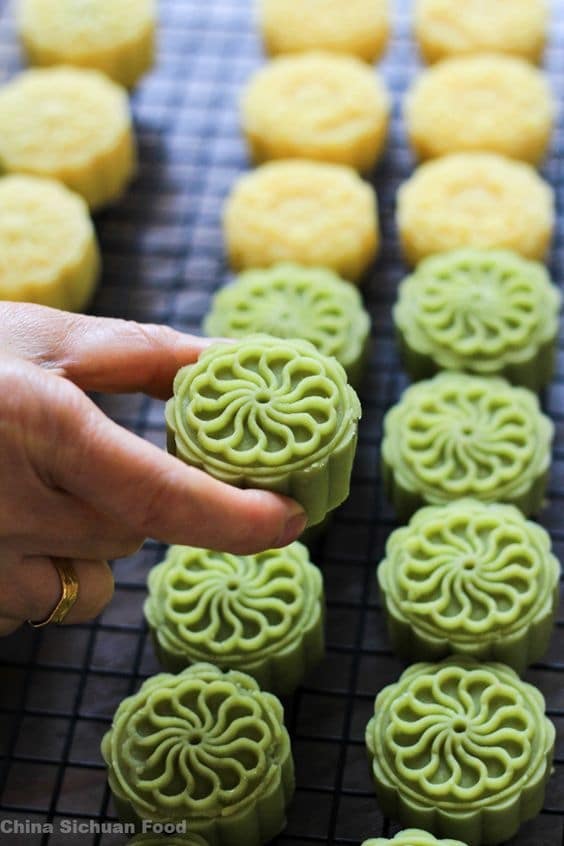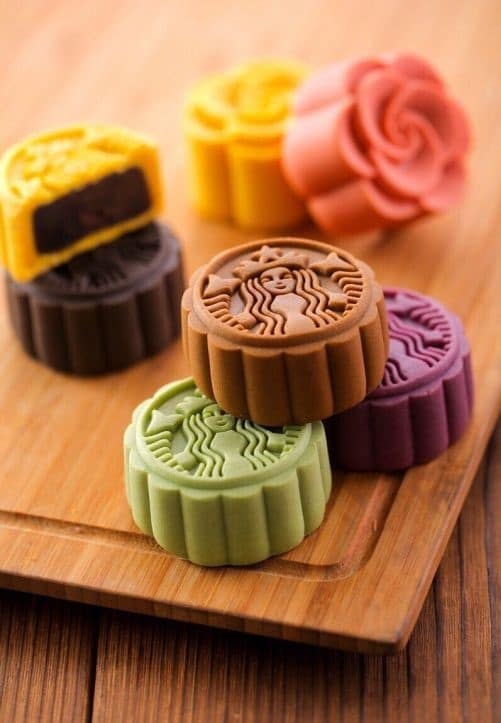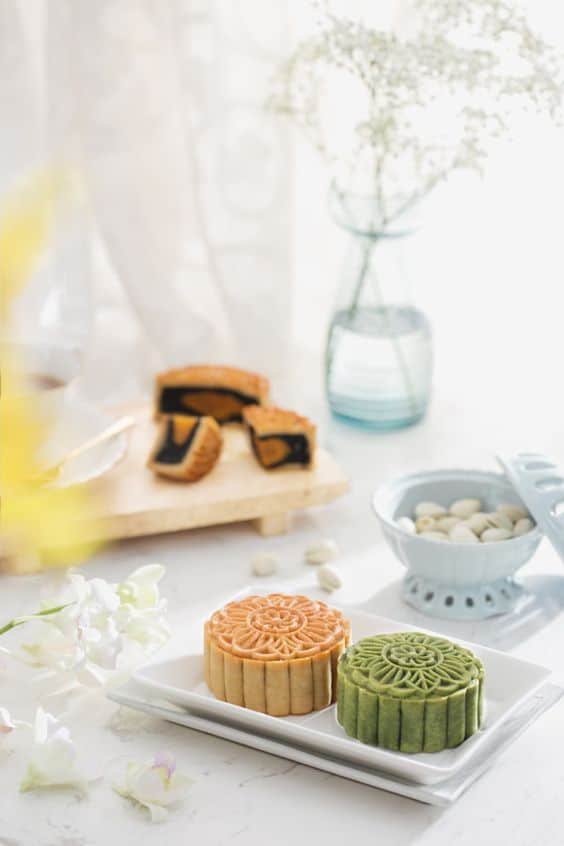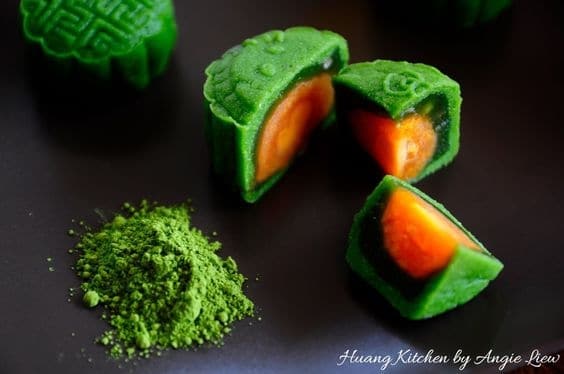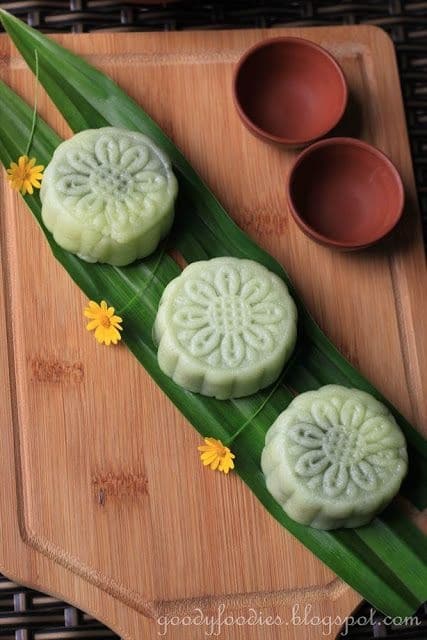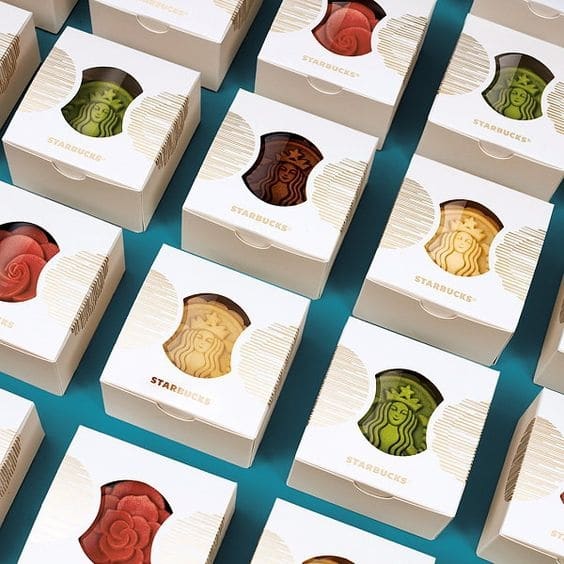การดื่มชาได้เริ่มขึ้นในประเทศจีน คาดว่าไม่น้อยกว่า 2,167 ปีก่อนคริสตกาล ตำนานการเริ่มต้นของการดื่มชามีหลายตำนาน บ้างก็กล่าวว่าจักรพรรดิเสินหนิงของจีน (Shen Nung) ค้นพบวิธีชงชาโดยบังเอิญ เมื่อพระองค์ทรงต้มน้ำดื่มใกล้ๆ กับต้นชา ขณะรอคอยให้น้ำเดือด กิ่งชาได้หล่นลงในหม้อชา สักพักหนึ่งกลิ่นหอมกรุ่นก็โชยออกมา เมื่อพระองค์เอากิ่งชาออกแล้วทรงดื่ม ก็พบว่า มันทำให้สดชื่น การดื่มชาจึงแพร่หลายมากขึ้นในเวลาต่อมา นอกจากทรงค้นพบสรรพคุณของชาแล้ว พระองค์ยังทรงค้นคว้าและทดสอบสมุนไพรชนิดต่างๆ กว่า 200 ชนิด จนได้มีการเผยแพร่ไปยังประเทศต่างๆ ทั้งญี่ปุ่น อินเดีย รวมถึงที่ไทยเอง
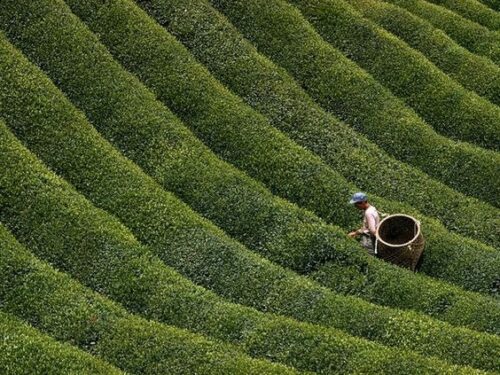
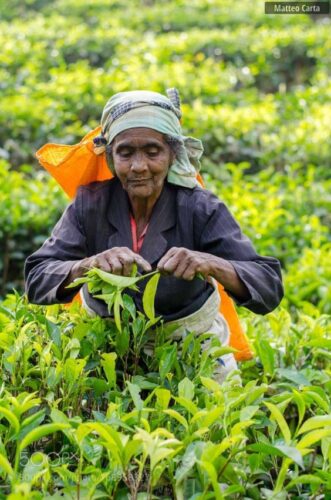
ในสมัยสุโขทัยช่วงที่มีการแลกเปลี่ยนวัฒนธรรมกับจีน พบว่าได้มีการดื่มชากัน แต่ก็ไม่ปรากฏหลักฐานว่านำเข้ามาอย่างไร และเมื่อใด แต่จากจดหมายของท่านลาลูแบร์ ในสมัยสมเด็จพระนารายณ์มหาราชได้กล่าวไว้ว่า คนไทยได้รู้จักการดื่มน้ำชาแล้ว โดยนิยมชงชาเพื่อรับแขก การดื่มชาของคนไทยสมัยนั้นดื่มแบบชาจีนไม่ใส่น้ำตาล แต่บางตำราก็บอกว่าคนสมัยนั้นจะอมน้ำตาลกรวดใส่ปากก่อน แล้วจิบน้ำชาร้อนๆตาม ระหว่างนั้นเจ้าบ้านก็จะรินน้ำชาใส่ถ้วยให้เรื่อยๆ ถ้าแขกดื่มพอแล้วก็ให้คว่ำถ้วยชาลงเป็นการส่งสัญญาณว่าน้ำตาลในปากละลายหมดเกลี้ยง แต่น้ำชาร้อนก็ไม่ได้เป็นเครื่องดื่มที่นิยมกันทุกบ้านทุกครัวเรือน เพราะคนไทยชอบกินน้ำเย็นดับร้อนอย่างน้ำฝนมากกว่า น้ำชาร้อนจึงจัดเสิร์ฟเฉพาะในจวนข้าราชการหรือถวายพระเท่านั้น แต่ก็ยังไม่เป็นที่แน่ชัดนักว่าเป็นชาสายพันธุ์ไหน แล้วมีปลูกที่ไทยหรือเป็นเพียงชาที่ทูตใช้ชงดื่มกันในราชสำนัก
หลักฐานที่เห็นได้ชัดอีกประการ คือ ชาที่ปลูกในเมืองไทย เริ่มเมื่อสมัยรัชกาลที่ 5 พระบาทสมเด็จพระจุลจอมเกล้าเจ้าอยู่หัวได้เสด็จประภาสยุโรปเพื่อหลีกเลี่ยงการถูกล่าอาณานิคมจากชาวยุโรป เมื่อสมัยสงครามโลกครั้งที่ 2 ท่านได้เสด็จประพาสยุโรปโดยเฉพาะที่อังกฤษ ที่นั่นนิยมดื่มชาและ กาแฟ ในสมัยนั้นประเทศอินเดียเป็นเมืองขึ้นของอังกฤษตั้งแต่สมัย สงครามโลกครั้งที่ 1 ได้เอาสินค้าเกษตรจากประเทศอินเดียมากมาย ชาอินเดียที่มีชื่อเสียงที่สุดคือ ชาที่รัฐอัสสัม อยู่ที่ศรีลังกา เรียกว่า “ชาอัสสัม” แต่พอมาอยู่ที่ประเทศอังกฤษ ได้มีการเปลี่ยนชื่อจากชาอัสสัมมาเป็นชาซีลอน โดยระหว่างที่รัชกาลที่ 5 เจริญสัมพันธไมตรีอยู่นั้น ก็ได้นำต้นกล้าชาซีลอนจากอังกฤษกลับมาที่เมืองไทยด้วย ชาชนิดนี้จะชอบภูมิศาสตร์ที่เป็นภูเขาสูง และอากาศหนาวเย็น จึงได้ปลูกไว้ที่ดอยสะเก็ด สมัยนั้นเทือกเขาที่ดอยสะเก็ดจะมีภูเขาที่เชื่อมต่อเป็นแนวยาวถึงดอยวาวี ดอยแม่สลองและดอยตุง ปัจจุบันนี้ที่ดอยสะเก็ดและดอยวาวีก็ยังมีต้นชาอัสสัมอยู่ และได้รับการขนานนามใหม่ในการท่องเที่ยวว่า “ต้นชาร้อยปี”
เมื่อเริ่มการเพาะปลูกใบชาอย่างจริงจังทางภาคเหนือของประเทศ ในช่วงที่ปลูกพืชผักชนิดอื่นแทนฝิ่น จึงเริ่มมีการคิดค้นสูตรชาไทย ซึ่งทำจากชาอัสสัม ให้มีรสเข้มข้นถูกปากคนไทยมากขึ้นจนเป็นชาไทย เครื่องดื่มขึ้นชื่อของไทยทุกวันนี้
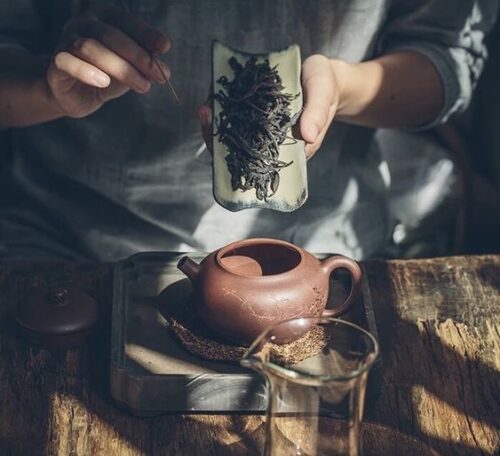
สำหรับการปลูกชาในประเทศไทยนั้น แหล่งกำเนิดเดิมจะอยู่ตามภูเขาทางภาคเหนือของประเทศ โดยจะกระจายอยู่ในหลายจังหวัดแถบภาคเหนือ ที่สำคัญได้แก่ เชียงใหม่ เชียงราย แม่ฮ่องสอน แพร่ น่าน ลำปางและตาก จากข้อมูลของสถาบันชาและกาแฟแห่งมหาวิทยาลัยแม่ฟ้าหลวง ได้มีบันทึกว่า การพัฒนาอุตสาหกรรมชาของประเทศไทย เริ่มขึ้นอย่างจริงจังในปี พ.ศ. 2480 โดย นายประสิทธิ์ และนายประธาน พุ่มชูศรี สองพี่น้องได้ตั้งบริษัท ใบชาตราภูเขา จำกัด และสร้างโรงงานชาขนาดเล็กขึ้นที่อำเภอแม่แตง จังหวัดเชียงใหม่ โดยรับซื้อใบชาสดจากชาวบ้านที่ทำเมี่ยงอยู่แล้ว แต่ปรากฏว่าพบปัญหาอุปสรรคหลายประการ เช่น ใบชาสดมีคุณภาพต่ำ ปริมาณไม่เพียงพอ ชาวบ้านขาดความรู้ความชำนาญในการเก็บเกี่ยวยอดชาและการตัดแต่งกิ่งชา จึงได้นำผู้เชี่ยวชาญทางด้านชาชาวฮกเกี้ยนมาจากประเทศจีน เพื่อมาถ่ายทอดความรู้ให้กับคนไทย ต่อมาในปี พ.ศ. 2482 สองพี่น้องตระกูลพุ่มชูศรี ได้แก้ปัญหาการขาดแคลนวัตถุดิบ โดยเริ่มปลูกสวนชาเป็นของตนเอง ใช้เมล็ดพันธุ์ชาพื้นเมืองมาเพาะ ที่อำเภอเชียงดาว จังหวัดเชียงใหม่ ในเนื้อที่ประมาณ 100 ไร่และต่อมาได้ขยายพื้นที่ปลูกมาที่อำเภอแม่แตง จังหวัดเชียงใหม่ ในช่วงนั้นเองภาครัฐได้มีการนำชาพันธุ์ดีมาจากประเทศอินเดีย ไต้หวัน และญี่ปุ่นมาทดลองปลูก เพื่อทำการค้นคว้าและวิจัยต่อไป
ในปี พ.ศ. 2508 ได้ส่งเสริมการผลิตมากขึ้น โดยขอสัมปทานทำสวนชาจากกรมป่าไม้จำนวน 2,000 ไร่ ที่บ้านบางห้วยตาก ตำบลอินทขิน อำเภอแม่แตง จังหวัดเชียงใหม่ ชาที่ผลิตได้ส่วนใหญ่จะเป็นชาฝรั่ง ต่อมาเอกชนเริ่มให้ความสนใจอุตสาหกรรมการผลิตชามากขึ้นโดยในปี พ.ศ. 2530 บริษัทชาระมิงค์ได้ขยายสัมปทานสวนชา ให้แก่บริษัทชาสยาม จากนั้นชาสยามได้เริ่มส่งเสริมให้เกษตรกรที่ปลูกไร่ในบริเวณใกล้เคียงปลูกสวนชาแบบใหม่ และรับซื้อใบชาสด จากเกษตรกรนำมาผลิตชาฝรั่งนามชาลิปตัน จนกระทั่งปัจจุบันนี้
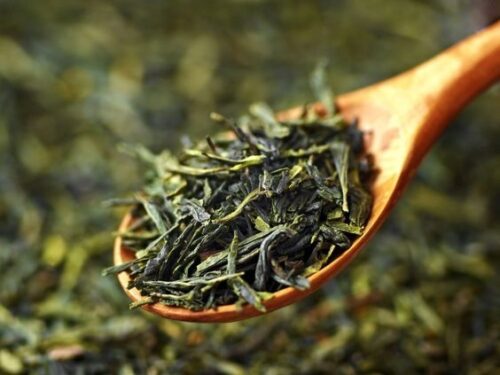
ส่วนชาเขียวนั้นแม้ไม่มีหลักฐานปรากฏแน่ชัดว่าเข้ามาในไทยช่วงสมัยไหน แต่มีารคาดการณ์ว่าเข้ามาในช่วงที่มีการทดลองปลูกที่ภาคเหนือ และเริ่มแพร่หลายชัดขึ้นในช่วงที่ไทยรับวัฒนธรรมญี่ปุ่นเข้ามา และเริ่มปลูกอยู่ทางภาคเหนือ ซึ่งก่อนที่จะมีการรับวัฒนธรรมการดื่มชาแบบญี่ปุ่น คือแบบเป็นผงมัทฉะมาตีกับฉะเซนนั้น ชาเขียวในไทยมี 2 ประเภท
- ชาเขียวแบบญี่ปุ่น ชาเขียวแบบญี่ปุ่นไม่ต้องคั่วใบชา ชาเขียวมีสารอาหารพวกโปรตีนน้ำตาลเล็กน้อย และมีวิตามินอีสูง
- ชาเขียวแบบจีน ชาเขียวแบบจีนจะมีการคั่วด้วยกะทะร้อนนั่นเอง
หากถอยกลับไปชาเขียวญี่ปุ่นก็ได้รับอิทธิพลมาจากจีนเช่นกันราวต้นสมัยเฮอัน โดยเผยแพร่ผ่านทางนักบวชญี่ปุ่นที่ได้เดินทางไปเป็นทูตเรียนรู้เรื่องต่างๆจากประเทศจีนรวมทั้งการศึกษาตัวยาสมุนไพรจากจีนอีกด้วย เมื่อพระ ได้ชงชาใส่ถ้วยนำมาถวายองค์จักรพรรดิได้ดื่มชาก็เกิดความประทับใจในรสชาติ จึงสั่งให้นำเมล็ดชาไปปลูกที่สวนสมุนไพรภายในบริเวณราชวัง ชาจึงได้แพร่หลายไปในแถบภูมิภาคคิงคิ (เกียวโต) แต่ความนิยมยังคงมีอยู่แต่ในเฉพาะกลุ่มชนชั้นสูงเท่านั้น
ต่อมาในช่วงตอนต้นสมัยคามาคุระ นักบวช Eisai ในพุทธศาสนาเซน ได้นำเมล็ดชามาจากจีนเป็นจำนวนมากพร้อมกับกรรมวิธีการผลิตชากลับมาด้วย นั่นก็คือการดื่มชาในสไตล์ Matcha นั่นเอง ได้มีการส่งเสริมการเพาะปลูกชาเพื่อใช้เป็นสมุนไพรให้แพร่หลายมากขึ้น และมีประโยคหนึ่งในหนังสือที่ท่านได้เขียนไว้ว่า “ชาเป็นพื้นฐานทางจิตใจและเป็นเครื่องมือแพทย์ที่ดีที่สุด ทำให้ชีวิตถูกเติมเต็มและมีความสมบูรณ์มากขึ้น”จากนั้นก็เริ่มมีการค้นคว้าสรรพคุณของชามากขึ้นอีกด้วย
ในสมัยมุโระมาจิ เริ่มมีพิธีชงชาในแบบฉบับดั้งเดิมของญี่ปุ่นแล้ว เริ่มมีการลงรายละเอียดในภาชนะที่ใช้ในพิธีชงชา รวมไปถึงการเสิร์ฟชาเขียวในร้านอาหารอีกด้วย การดื่มชายังเป็นที่นิยมในงานพบปะสังสรรค์ของชนชั้นนักรบมากขึ้น แต่เป็นการดื่มชาเพื่อเล่นเกมทายปัญหาต่างๆ เพื่อชิงรางวัลเป็นเหล้าสาเก และมีการร้องเล่นเต้นรำไปด้วย ต่อมานักบวชเซน Shuko Murata ไม่เห็นด้วยกับการดื่มชาเพื่อความสนุกสนานเช่นนั้น เขาคิดว่าโลกแห่งความเรียบง่ายของเซนนั้นมีแนวคิดแตกต่างออกไปในการดื่มชา การดื่มชาด้วยความเรียบง่ายและมีสมาธิในแบบของเซนจะช่วยให้จิตใจสามารถพัฒนา ขึ้นได้อย่างสมบูรณ์ นักบวชจึงออกแบบห้องพิธีชงชาขนาดเล็ก เพื่อใช้สนับสนุนการชงชาตามอุดมคติของนักบวช Eisai และในขณะที่ชงชานั้นก็ได้ผสมผสานจิตวิญญาณของพุทธศาสนานิกายเซนไปด้วย
ต่อมาในสมัยยุคเมจิ การผลิตชามีมากขึ้น มีหนังสือเทคนิคการผลิตต่างๆ ออกมาอย่างแพร่หลาย เริ่มมีเครื่องจักรเข้ามาช่วยในกระบวนการผลิต และเริ่มมีการส่งออกชาไปยังต่างประเทศแล้ว และปริมาณการส่งออกยังมากเป็นอันดับสองรองจากประเทศจีนอีกด้วย แม้การส่งออกจะกระท่อนกระแท่นไปบ้างในช่วงสงครามโลกครั้งที่ 1 เพราะตอนนั้นชาดำเริ่มเป็นที่นิยมมากขึ้นในต่างประเทศ แต่ไม่นานในศตวรรษที่ 20 ชาเขียวก็ได้เป็นส่วนหนึ่งของชีวิตประจำวันของผู้คนทั้งประเทศญี่ปุ่นและ แพร่หลายออกมาทั่วโลกอย่างต่อเนื่องจนถึงปัจจุบันนั่นเอง
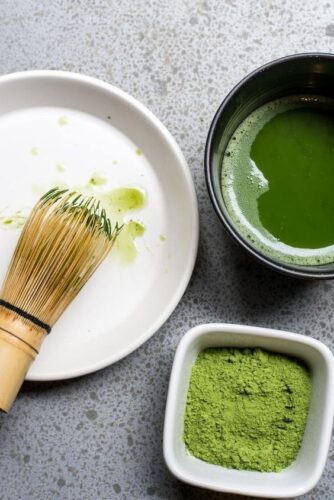
ที่มา
http://photography.nationalgeographic.com
http://web2.mfu.ac.th/other/teainstitute/?p=291&lang=th
บทความจาก : Fuwafuwa

